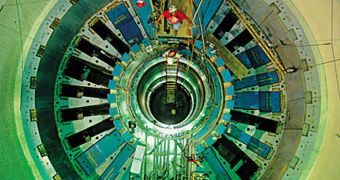Many physicists today believe that the elementary particles known as neutrons may hold the key to a wide range of improvements in many fields of science nowadays. This may seem a bit off for those of you who know that these particles are neutrally-charged, slightly bigger than a proton, and inconsequential in most cases in dictating the level of reactivity a particular atom containing it will have with other atoms. But experts show that neutrons in fact have a series of little-known properties that make them especially beneficial for use in scientific investigations. Perhaps the most important of them is the fact that their neutral charge allows them to penetrate deeper into any material than electrons can.
They can additionally be used to probe magnetism, as they have a magnetic moment caused by their mass and spin. They are sensitive to light chemical elements, and interact with nuclei in a target atom, rather than with electron orbital. This grants it the ability to, for example, tell the hydrogen isotopes deuterium from tritium apart from each other. But the real kicker is that they do so without destroying the samples they analyze, which is more than what can be said about electron-based observations.
These traits have made researchers use neutrons in a large array of observational applications, ranging from analyzing complex fluids and coal to investigating cellular membranes, proteins and magnetic materials. “As far as I'm concerned, neutrons are the most powerful structural probe that inorganic and materials chemists have to characterize their materials. Nothing is better than a neutron,” says Princeton University chemistry professor Robert J. Cava. He is involved in experiments to study the structure and magnetic properties of transition-metal complexes, and employs neutrons regularly.
But the thing that deters many from using neutrons in their investigations is the difficulty of producing them at the required scale. Unlike electrons, or forms of electromagnetic radiation (infrared, visible and ultraviolet light, X-rays and so on), these particles cannot be produced in individual labs. In fact, in the entire United States, only three main production facilities exist – the reactor based at the Center for Neutron Research, a part of the National Institute of Standards and Technology (NIST), the spallation and reactor sources at the US Department of Energy's (DOE) Oak Ridge National Laboratory (ORNL), and the spallation source at the DOE Los Alamos National Laboratory (LANL).
“We're finding more and more that neutrons can answer questions you really can't get at in another way,” says University of Delaware chemical engineering professor Norman J. Wagner. His opinion is in tune with that of many researchers who believe that neutrons hold the key to breaking riddles that have stopped research in its tracks in fields such as molecular biology, biotechnology, chemistry, nanotechnology, electronics and so on.
Article Copyright © 2010 American Chemical Society

 14 DAY TRIAL //
14 DAY TRIAL //